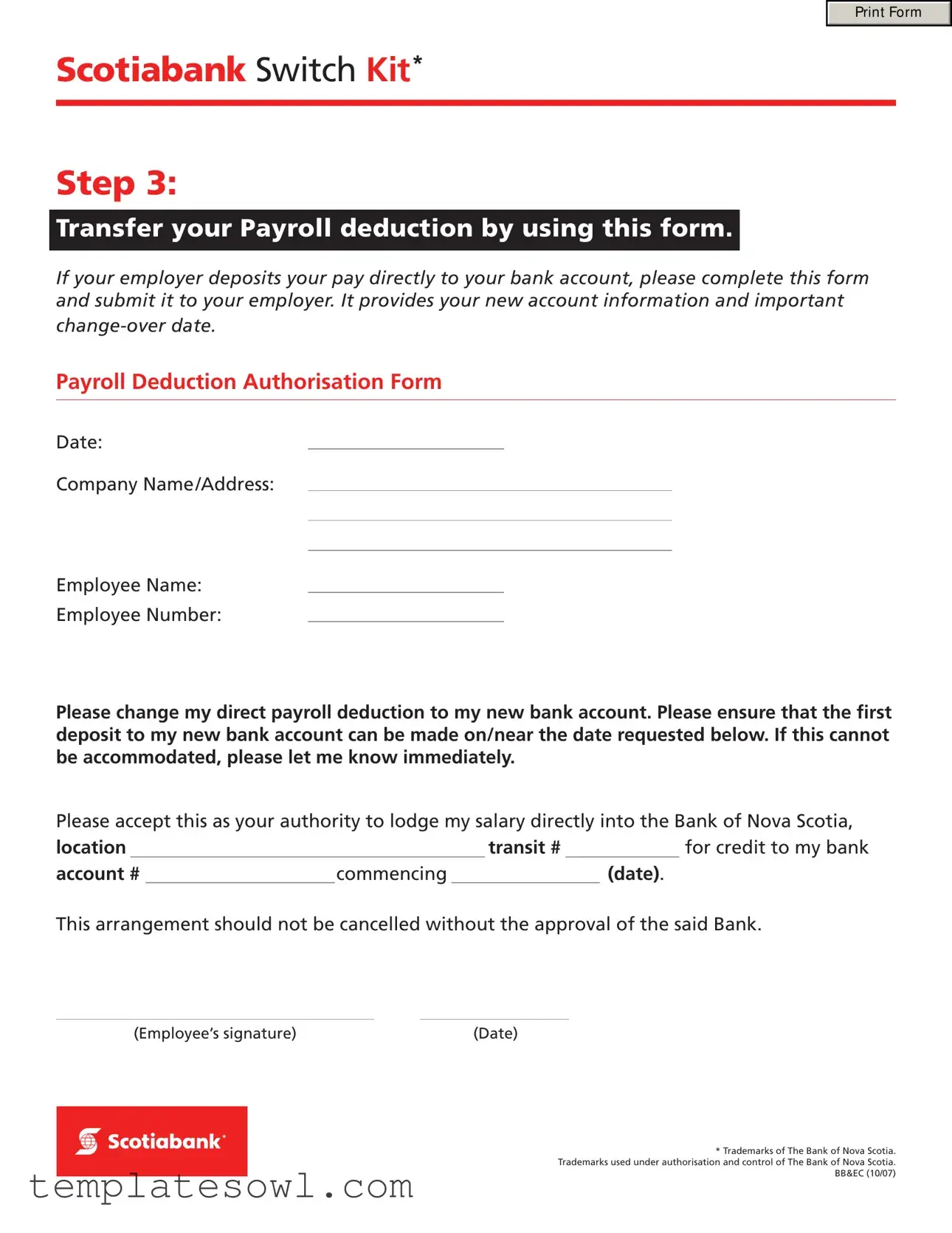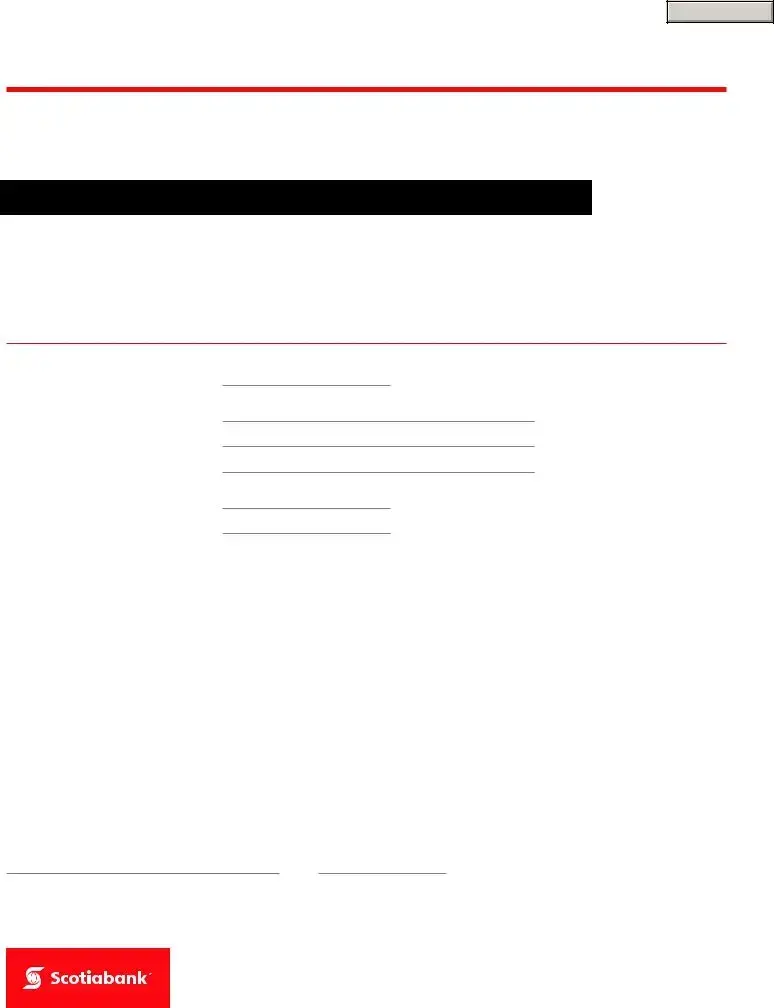Filling out the Scotia Banking form can seem straightforward, but a few common mistakes can lead to delays in your payroll deductions. Being aware of these mistakes will help ensure a smooth transition to your new account.
One frequent error is neglecting to include the correct company name or address. If your employer can't clearly identify you, it may slow down the process or even lead to rejection of your request. Always double-check that this information is accurate and reflects your current employer’s details.
Another common mistake is omitting your employee number. This unique identifier is crucial for your employer to process the request accurately. Without it, there may be confusion regarding your payroll account, causing unnecessary delays.
Many individuals also fail to specify the date for the first deposit into the new account. If you skip this step, it could result in your payroll being sent to your old account. Providing a clear date ensures your funds are directed to your new bank account without interruption.
Additionally, individuals sometimes misunderstand the authorization section, either by not signing it or forgetting to include the date next to their signature. This oversight can render the entire form invalid. Remember, your signature is confirmation that you authorize this transfer.
It's also essential to double-check the transit number and account number you've written down. A simple transposition error, like mixing up two digits, can lead to serious complications. Ensure each number is correct to avoid misdirected funds.
Another mistake is failing to inform your employer immediately if your requested transfer date cannot be accommodated. Keeping open lines of communication helps prevent misunderstandings and potential payroll errors.
For those who are not proactive about following up after submitting their form, this can be a significant problem. Always check in with your payroll department after a reasonable time to ensure the changes have been implemented.
Also, people often forget to keep a copy of the submitted form. Documentation is key! If any issues arise, having a copy of your request can help clarify what was intended.
In conclusion, filling out the Scotia Banking form requires careful attention to detail. By avoiding these common mistakes, you will facilitate a smoother transition to your new bank account and ensure your payroll deductions are processed without delay.

